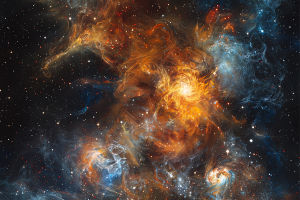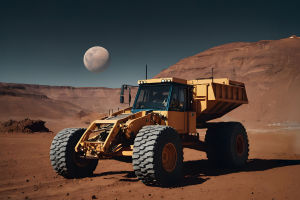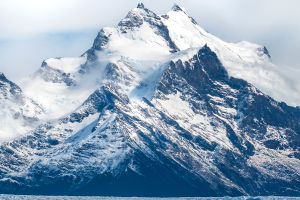Thawing Arctic Alarm
Hey Lykkers! ❄️
Picture this: You're walking across the frozen Arctic tundra, the crunch of ice beneath your boots, and the stillness of a land that's been frozen for thousands of years.
But with every step, something ancient stirs beneath your feet.
No, it's not a sci-fi thriller—it's real. And it's heating up.
Welcome to the hidden crisis of thawing permafrost, where the Earth’s freezer is leaking, and what's escaping could turbocharge global warming in ways we're only beginning to understand.
Let’s dive in 👇
Carbon Vault
Permafrost is ground—soil, sediment, or rock—remaining at or below 0 °C for at least two years. In Arctic basins and tundra plains, it has accumulated organic matter over millennia, creating a colossal natural vault. Scientists estimate it stores roughly 1,400 gigatons of carbon, quadruple human emissions since the Industrial Revolution and double the carbon currently in the atmosphere.
Hidden Risk
Beneath seemingly stable landscapes lie reservoirs of dormant carbon awaiting liberation. As thaw deepens, microbial activity speeds up, decomposing organic matter and emitting greenhouse gases. While carbon dioxide is the main output, vast stores of methane—over 20 times more potent per molecule—also escape, intensifying the greenhouse effect and accelerating global warming far beyond human emissions alone.
Budget Oversight
Global carbon budgets balance emissions against sinks—forests, soils, and oceans—but often ignore permafrost. This blindspot deprives policymakers of critical information. Without integrating thaw feedbacks into calculations, projected emission pathways risk underestimating future warming, making ambitious targets like the Paris Agreement’s 1.5 °C guardrail increasingly unattainable.
Seasonal Shift
Winter once froze Arctic soils solid, halting microbial respiration until thaw returned. Recent observations from research centers, including the Woods Hole Research Center, show winter soil emissions now outpacing summertime uptake at key sites. This seasonal reversal signals an alarming trend: permafrost regions are shifting from net carbon sinks to net sources, even under current temperatures.
Arctic Heat
The Arctic is warming at 2–4 times the global average, a phenomenon known as Arctic amplification.
Remember when Siberia hit over 30°C for weeks in 2020?
Places like Verkhoyansk shattered records. Beneath the surface, ancient permafrost was quietly unfreezing—and carbon was waking up.
Albedo Flip
Snow and ice typically reflect up to 90 percent of incoming solar radiation. As they recede, darker earth and vegetation absorb far more energy. This albedo feedback loop intensifies local heating, accelerating melt in a cascading process: less reflective surface leads to more warming, which uncovers more dark ground, further boosting absorption.
Vegetation Boost
Thawing permafrost releases nutrients that enrich Arctic soils. Shrubs, grasses, and sedges take root in newly warmed layers, creating a greener landscape. While plant growth captures some carbon, the net effect often remains positive emissions; darker foliage absorbs more heat, reinforcing the albedo flip and hastening further thaw.
Insulation Loss
A natural moss and peat blanket traditionally shields permafrost from summer sun. Fire damage eradicates this layer, removing critical insulation. Exposed ground, now unprotected, absorbs heat rapidly. As thaw penetrates deeper, latent heat stored in ice-rich soil further contributes to subsidence, forming thermokarst lakes and unstable terrain.
Methane Surge
In waterlogged zones, thawed permafrost creates wetlands and thermokarst lakes. Oxygen-starved conditions favor methanogenic microbes, producing methane bubbles that escape through the water’s surface. Observations in Alaska and Siberia record sharp methane spikes above thaw ponds, raising concerns that methane pulses could trigger abrupt global temperature jumps.
Infrastructure Toll
Roofs, roads buckle, and pipelines warp as foundations shift. Permafrost thaw jeopardizes critical Arctic infrastructure, from remote settlements to major oil conduits. Repair costs for communities and industries already exceed billions of dollars, and continued warming threatens to worsen damage, undermining energy, transportation, and communication networks.
Community Impact
Northern Indigenous populations rely on ice roads, traditional hunting routes, and stable landscapes. Thaw-induced erosion and slumping transform coastlines, severing access to sacred sites and subsistence resources. Communities face food insecurity and cultural loss as age-old practices collide with a transforming environment, highlighting the human dimension of permafrost degradation.
Research Needs
Satellites (like ESA’s Sentinel and NASA’s SMAP) give us amazing surface data. But we’re still missing the fine details—especially in remote areas.
We need:
More fieldwork
More community science
More boreholes
And better feedback modeling
Without it, we’re flying blind into a warming future.
Policy Action
The IPCC now urges countries to factor permafrost into their climate math.
That means subtracting at least 100 gigatons of CO₂ from our budgets—just to account for thaw emissions.
This isn’t optional. It’s essential.
We also need:
🌍 International collaboration
💰 Funding for Arctic resilience
🔁 Tech-sharing between nations
🤝 Empowerment of Indigenous leadership
Conclusion
Lykkers, the Arctic is whispering a warning—and it's getting louder.
Frozen for millennia, permafrost is melting into a threat we can't ignore. If we don’t act, this quiet thaw could undo decades of climate progress.
So next time you think about climate change, don’t just look up at the sky—look down into the Earth... and imagine what’s melting below.
What do you think—should permafrost emissions be a top global priority?
Drop your thoughts, ideas, or questions below ⬇️ Let's thaw the silence together.
Contact to : xyjph123@gmail.com
Privacy Agreement
Copyright © boyuanhulian 2020 - 2022. All Right Reserved.
Privacy Agreement
Copyright © boyuanhulian 2020 - 2022. All Right Reserved.


